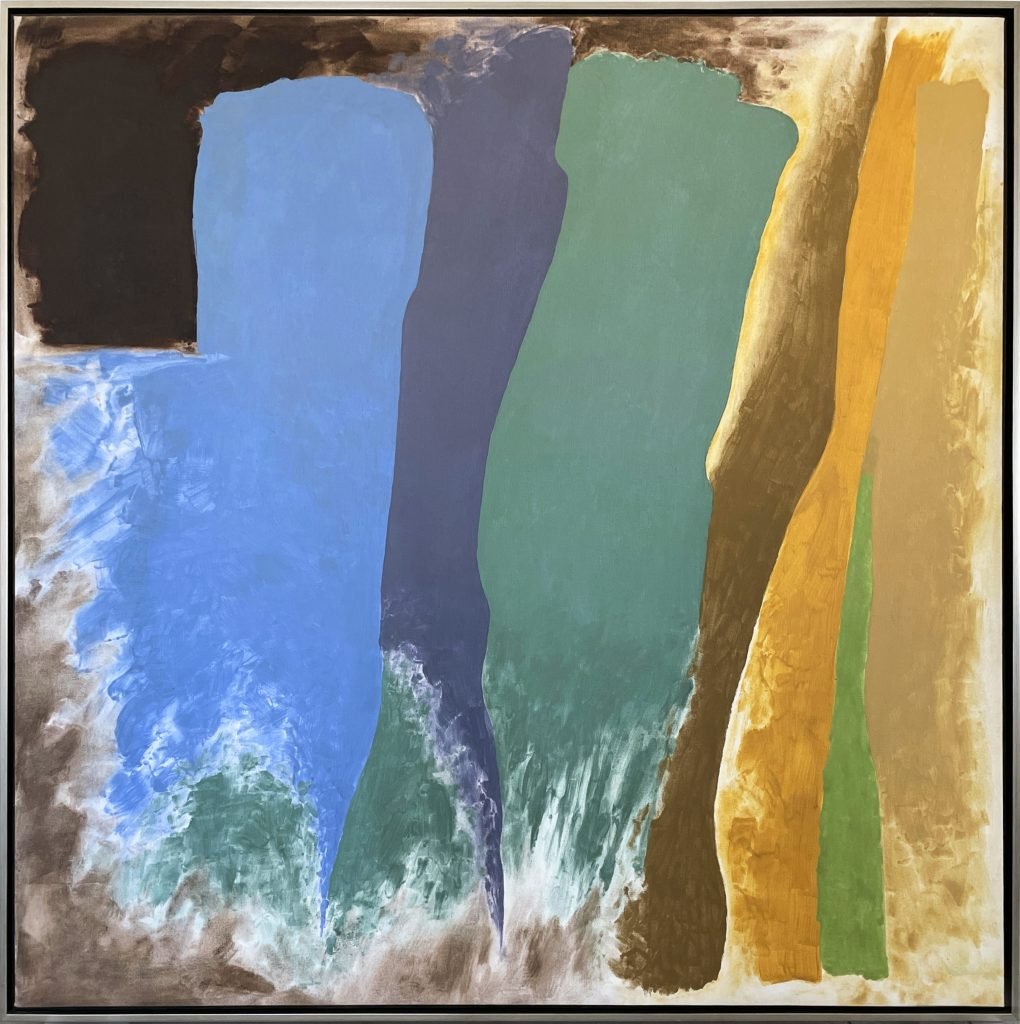Artnet Auctions
Want to Start Collecting Abstract Art? Let Dakota Sica, Curator of Artnet’s Post-War Abstraction Sale, Walk You Through the Basics
Don't miss a chance to bid on works that changed the course of art history.

Don't miss a chance to bid on works that changed the course of art history.

Artnet Auctions

Artnet’s second auction dedicated to Abstract Expressionism and Color Field painting opened today. Curated by Dakota Sica, an avid collector and partner at New York’s Leslie Feely Gallery, the sale highlights a diverse roster of artists from the post-war period, with an emphasis on New York-based abstraction and an expanding circle of historically overlooked practitioners.
Gems: Collecting Post-War Abstraction presents paintings and works on paper by Friedel Dzubas, Larry Poons, Lynne Mapp Drexler, Adolph Gottlieb, Vivian Springford, and many other artists who shaped the movement.
On the occasion of this sale, we spoke to Sica, the show’s co-curator, about the history of the AbEx movement, the importance of provenance, and much more. Read on or watch below, and be sure to place your bids, now through September 14.
Can you tell us a brief history of the AbEx movement? When did it begin, who are the key players, and what led to this artistic development?
The birth of Abstract Expressionism took place in New York City in the 1940s, and picked up speed in the 1950s. The artists most central to the movement are Jackson Pollock, Willem de Kooning, Franz Kline, and Robert Motherwell, to name a few. These artists are known for their expressive, gestural works.
However, the narrative as we know it is slightly flawed, and new names are being ushered into the canon year after year. Recently, greater attention is being paid to the women of the movement, such as Hedda Sterne, Lee Krasner, and Joan Mitchell. When you reexamine the narrative, it becomes clear that the history was not so fixed. There are so many interesting characters and brilliant artists in conjunction with the greats we already know. This creates a much richer narrative history. Lynne Mapp Drexler is a perfect example of one of these exciting new discoveries.
Can you talk about a few of the painting techniques that are associated with the AbEx and Color Field movements?
The hallmarks of Abstract Expressionism are bold, gestural, painterly marks, and the works in this sale are expressive and bold. At the same time that New York’s AbEx scene flourished, the Gutai movement was unfolding in Japan, with artists like Kazuo Shiraga exploring similar mark-making.
The touchstones of Color Field painting are flatness and hue. In opposition to their predecessors, these artists attempted to find purity by distilling the art of painting to its simplest form. The artists strived to create a flat color field, with acrylic paint soaked directly into the weave of the unprimed canvas.
This is debatable, but I see Mark Rothko as the bridge between the AbEx and Color Field movements. His paintings tied the gestural brushstrokes of Abstract Expressionism with the sublime color of the Color Field painters.

Dakota Sica. Courtesy of Lucas Hoeffel Photography.
How did you become interested in this movement in particular?
I have always been attracted to nonrepresentational art, because I believe it connects us all, transcending cultural boundaries and personal narratives. I find it very intriguing to unpack how painting expanded from purely representational styles to abstract art as we know it.
To me, abstract works come closer to the spiritual, natural, and human experience. We can all relate to the visceral feeling of paint on canvas. It’s primal, in a way, but always in vogue.
Do you have a favorite work being offered in this sale? Can you tell us more about the artist, provenance, and the techniques used?
One of the star lots in this sale is Friedel Dzubas’s Wendover (1974). This painting was acquired by its previous owner right after Dzubas painted it, and it resided in the same collection for nearly 40 years. The work is a quintessential example of Dzubas’s signature style, and at 6 feet tall, it boasts an impressive scale.
Dzubas shared a studio with Helen Frankenthaler early in their career, and there is a lot of crossover in their work. A Frankenthaler at this scale is valued at several millions, while this Dzubas is estimated at $150,000 to $180,000—a tremendous value in comparison.

Friedel Dzubas, Wendover (1974). Live now in Gems: Collecting Post-War Abstraction. Est. $150,000–$180,000.
What elements should one look for when collecting their first piece of Color Field art?
I believe that Color Field painting is still one of the most undervalued subsets of post-war art, making it possible to find high-quality artworks for incredible values. My advice would be to acquire pieces that are indicative of the movement. These examples are not only beautiful, but they represent a seismic shift in the history of art and painting. Additionally, the basics cannot be underestimated: Look for examples with good color, scale, and composition, paired with historically significant motifs.
For example, I would urge somebody interested in collecting Helen Frankenthaler paintings to look for a 1960s stain painting. Her pioneering technique of watering down and pouring acrylic paint was earth-shattering for artists of the era, and greatly influenced fellow painters such as Kenneth Noland and Morris Louis.
How can one be sure of an artwork’s condition when bidding online?
First things first: Read the condition report. These reports are typically prepared by specialists at the auction house who have cataloged and handled the work. Second, I always request additional iPhone images. These less-staged photographs tend to provide an honest glimpse at the artwork’s true look and feel. Lastly, when in doubt, ask questions! At any reputable auction house, the specialists will be forthcoming about the artwork’s condition.

Dakota Sica. Courtesy of Lucas Hoeffel Photography.
What is provenance in an artwork, and how do you measure or qualify it?
Provenance is the history of ownership of an artwork. A complete provenance means you can trace the history of ownership from the time the work was created in the studio all the way up to the present day. For authenticity’s sake, it is crucial to establish a clear history of ownership when buying and selling artworks.
An artwork’s provenance can also add a certain amount of cachet. When a work comes from a prestigious collection—like the Rockefellers’, for example—it adds a premium on its price. On the flip side, if the provenance lists many owners in a short period of time, it could reflect the work as a “hot potato,” which collectors have not held on to. Most collectors prefer works that have been in collections for a significant period of time, because when they become available, it can be a once-in-a-generation opportunity to buy.
Gems: Collecting Post-War Abstraction is live now on Artnet Auctions through September 14.